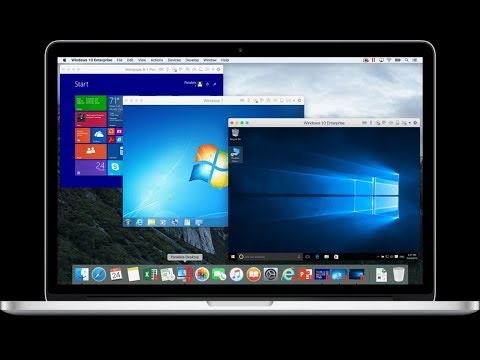
You might be familiar with running software and apps on physical hardware in your day-to-day life. Applications like Instagram and Twitter on your phone to chrome browser on your computer. These are prime examples that we work through applications installed on individual devices.
But you can virtualize those devices in multiple ways and make your workflow faster. It is just an idea behind an online virtual machine that sees extensive use in business. An online virtual machine is a digital form of a physical computer. It has a CPU, disk storage, and memory, and the ability to connect to the internet. On the other hand, the parts that make a computer (hardware) are physical. VMs are nothing, just software-defined computers situated in physical servers but existing as code. It is highly capable of running programs and OS, storing information, and connecting to the network. Moreover, it can do additional computer functions but requires continuous system maintenance like system monitoring and updates.
What are the uses of an online virtual machine?
An online virtual machine allows an individual or business to run an OS that is similar to a separate computer in an app window or desktop. VMs can achieve different levels of processing power requirements, run software that needs a different operating system, or test applications in a safe environment. VMs are usually delivered via the cloud hence it allows multiple users to access virtual applications that result in cost-effective computing. Individuals and businesses opt for these services if they want to:
- Use software designed for other OS.
- Doing risky tasks like testing critical applications.
- Test applications in a safe and closed environment.
- Server different levels of processing power to users.
- Server virtualization for improving the efficiency of IT teams.
How do virtual machines work?
Generally, an online virtual machine runs as a process in an application, same as other applications, on the OS of the physical machine. VMs are made of key files that includes log file, NVRAM setting file, configuration file, and virtual disk file.
Advantages of virtual machines
Online virtual machines are easy to maintain and manage. Moreover, they offer multiple advantages over physical machines:
- VMs can run numerous OS environments on a single physical computer. Thus it saves physical space, time, and cost of management.
- Virtual machines allow legacy applications thus reducing the costs of migrating to a new OS. Example – Linux VM that runs on a distribution of Linux as the guest OS can exist on a host server that is running on a non-Linux OS like windows.
- Virtual machines can also deliver integrated disaster recovery and application provisioning.
Disadvantages of virtual machines
However, online virtual machines offer several advantages over physical machines still there are few disadvantages:
- If infrastructure requirements are not met then running numerous VMs on one physical server might not deliver expected performance.
- Virtual machines are slow and less efficient than physical computers. Hence, most businesses prefer a combination of both physical and virtual infrastructure for balancing the benefits and drawbacks.
Conclusion
An online virtual machine can be the best replacement for a physical computer. If you are an individual or business who is seeking some good replacement for the physical devices then go with an online virtual machine. Moreover, it runs multiple operating systems on a single computer and helps in saving time, cost, and physical space. However, using a combination of both VMs and physical systems can do all the tasks. Cloud hosting India is an advanced way of saving everything on the cloud and. Seek the genuine hosting service provider and then buy their service.








